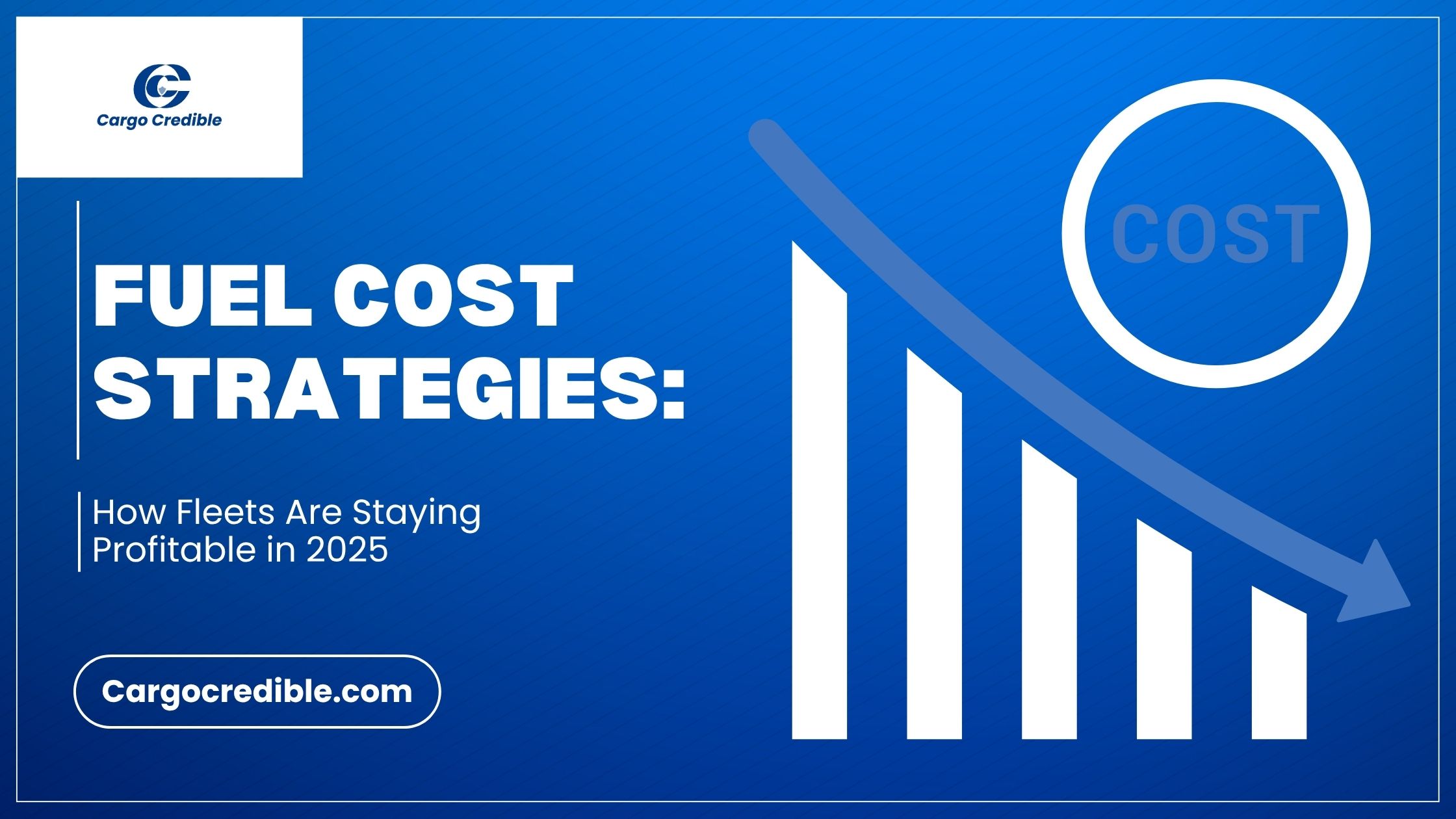Fuel Cost Strategies: How Fleets Are Staying Profitable in 2025

Welcome to another week of our Operational Efficiency & Profitability series! Today’s topic is super important: fuel — the energy that keeps fleets of trucks moving and helps businesses deliver everything from groceries to gadgets.
But here’s the challenge: fuel prices in 2025 are as unpredictable as a roller coaster! Some days it’s up, some days it’s down, but for fleets, it’s always one of the biggest costs. So, how are companies staying in the game and making money? Let’s take a closer look, in a way that’s easy for anyone to understand!
What Is a Fleet?
A fleet is a group of vehicles owned by a company—think trucks, vans, or buses—that work together to deliver packages, move people, or provide services. For example, imagine Amazon trying to deliver all its packages with just one van. It wouldn’t work—they need hundreds! That’s a fleet.
Why Is Fuel So Expensive in 2025?
Fuel, like diesel and gasoline, is made from oil. The price goes up and down because of things like:
- World events (wars, disasters, even politics!)
- Supply and demand (how much fuel is available and how many people want it)
- Problems at refineries (where oil is turned into usable fuel)
With all this uncertainty, fuel remains one of the biggest expenses for any fleet.
Smart Fuel Strategies Fleets Use to Stay Profitable
Here’s how the experts are tackling rising fuel costs in 2025—and winning at it!
1. Using Fuel-Efficient Vehicles
Modern trucks and vans are designed to use less fuel without slowing down. For example, a new truck in 2025 might use 20% less fuel than one from 2015. How? Smoother shapes cut through the wind, lighter materials mean less weight to move, and upgraded engines turn fuel into power more efficiently.
2. Switching to Electric and Hybrid Trucks
Electric trucks run on big batteries instead of gas and create less pollution. Hybrids use both gas and electricity for even better mileage. Plus, governments often offer tax breaks for buying these “green” vehicles, saving companies extra money.
3. Better Route Planning with GPS
Getting lost or stuck in traffic wastes fuel. Today, smart GPS systems help drivers:
- Find the shortest, quickest routes
- Avoid traffic jams
- Cut down on idling (when the truck is just sitting still, wasting fuel)
Less time on the road means less fuel burned.
4. Driver Training Makes a Big Difference
How the driver uses the truck matters! Companies teach drivers to:
- Avoid speeding (fast driving eats up fuel!)
- Use gentle acceleration and braking
- Turn off engines when stopped for long periods
- Use cruise control on highways for smoother, more efficient driving
Leaning into these habits can help a single driver save thousands of dollars in fuel every year!
5. Buying Fuel in Bulk & Using Discount Cards
Big companies buy large amounts of fuel at once, often getting cheaper prices—like shopping at a wholesale club. Many also use fuel cards for extra discounts or rewards, and track where to get the best deals.
6. Monitoring Fuel Usage with Technology (Telematics)
Today, fleets use small computers and sensors (called telematics) that:
- Track how much fuel each truck uses
- Spot fuel-wasting habits (like too much idling or speeding)
- Help managers fix problems quickly
Telematics turns every truck into a “smart truck,” helping save even more fuel.
Why Does It Matter?
When fleets save on fuel costs, they:
- Save money so the business stays open and grows
- Help the planet by using less energy and causing less pollution
- Deliver products faster because they plan smarter routes
- Keep prices lower for customers (yes, that means you!)
Quick Recap
Here are the clever ways fleets are saving fuel and staying profitable in 2025:
- Using fuel-efficient trucks and vans
- Switching to electric or hybrid vehicles
- Planning smarter routes with GPS
- Training drivers for fuel-smart driving
- Buying fuel in bulk and using discount cards
- Tracking fuel use with high-tech tools
Small Changes, Big Impact
Fuel will always be a big cost for fleets, but in 2025, companies are more creative than ever. Technology, smart planning, better vehicles, and skilled drivers are combining to help fleets save money, deliver goods efficiently, and protect the environment.
Next time you see a delivery truck, remember: there’s a whole team—and a lot of smart strategies—working behind the scenes to save fuel and keep things moving!
Take Action!
If you ran a fleet, which strategy would you try first? Would you upgrade to fuel-efficient trucks, train your drivers, or invest in the latest GPS tech? Think like a fleet manager—every decision counts!
Comments (0)
- No comments yet.